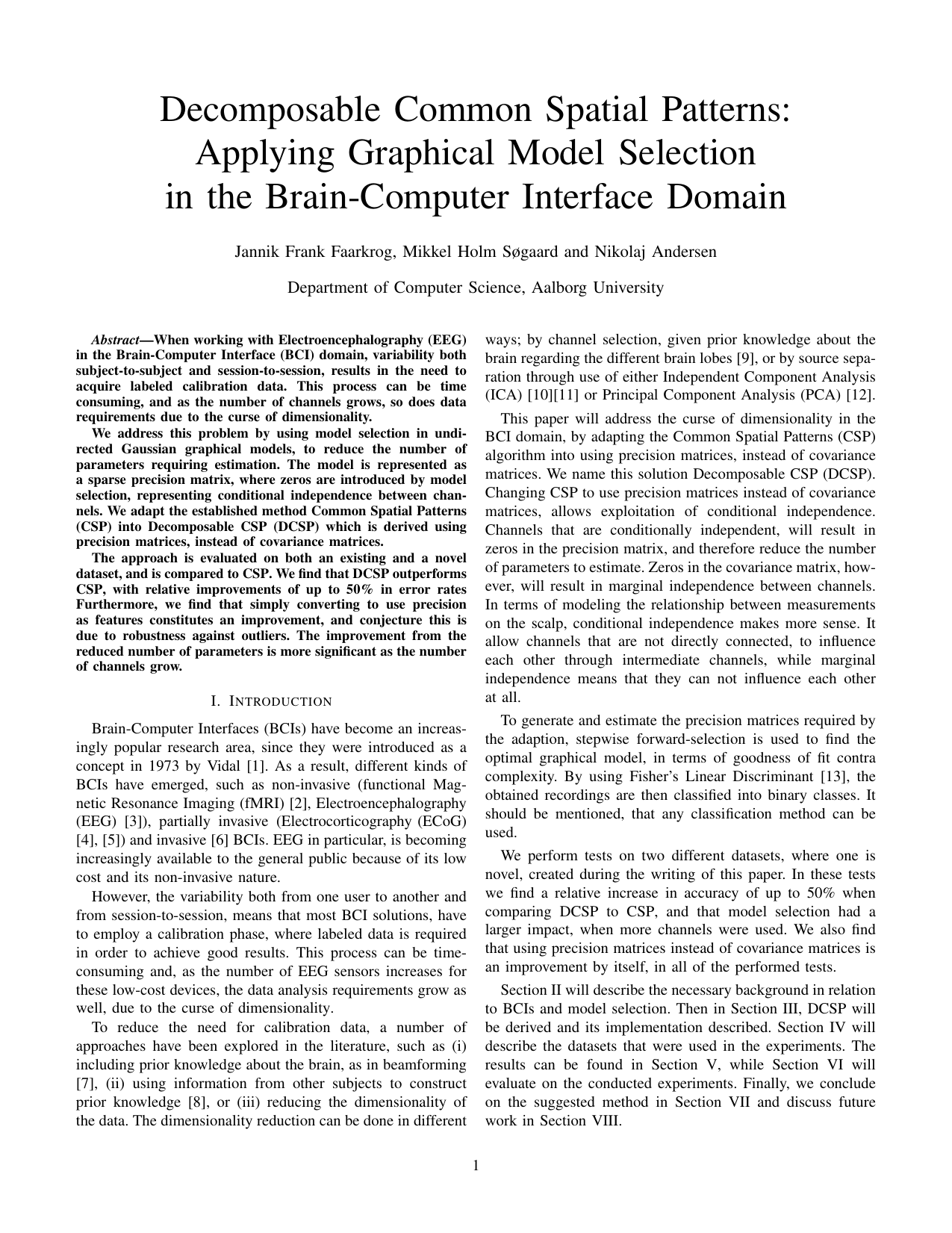
Decomposable Common Spatial Patterns
Translated title
Decomposable Common Spatial Patterns: Applying Graphical Model Selection in the Brain-Computer Interface: Applying Graphical Model Selection in the Brain-Computer Interface
Term
4. term
Education
Publication year
2014
Submitted on
2014-06-10
Pages
12
Abstract
When working with Electroencephalography (EEG) in the Brain-Computer Interface (BCI) domain, variability both subject-to-subject and session-to-session, results in the need to acquire labeled calibration data. This process can be timeconsuming, and as the number of channels grows, so does data requirements due to the curse of dimensionality. We address this problem by using model selection in undirected Gaussian graphical models, to reduce the number of parameters requiring estimation. The model is represented as a sparse precision matrix, where zeros are introduced by model selection, representing conditional independence between channels. We adapt the established method Common Spatial Patterns (CSP) into Decomposable CSP (DCSP) which is derived using precision matrices, instead of covariance matrices. The approach is evaluated on both an existing and a novel dataset, and is compared to CSP. We find that DCSP outperforms CSP, with relative improvements of up to 50% in error rates. Furthermore, we find that simply converting to use precision as features constitutes an improvement, and conjecture this is due to robustness against outliers. The improvement from the reduced number of parameters is more significant as the number of channels grow.
Documents
